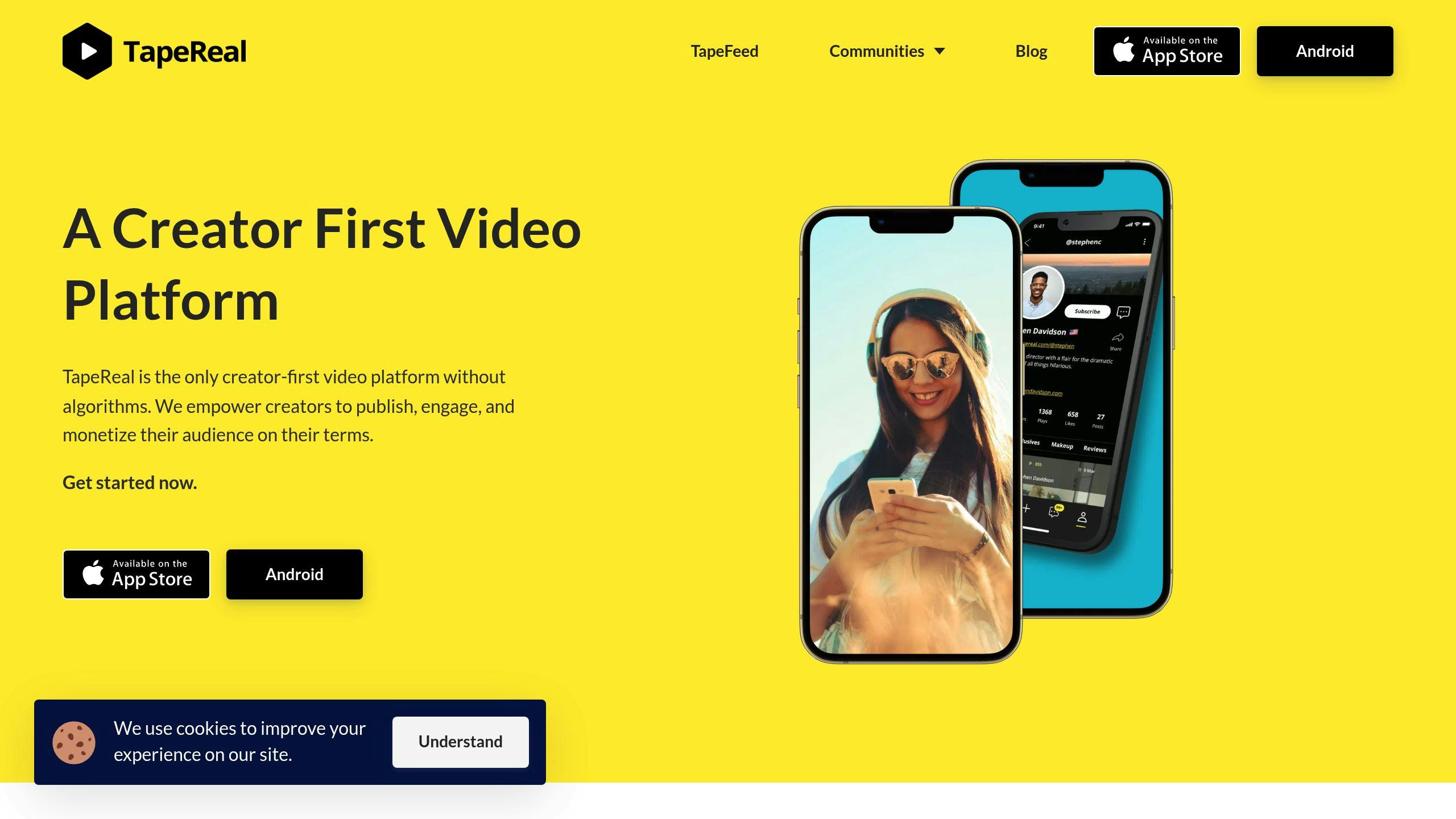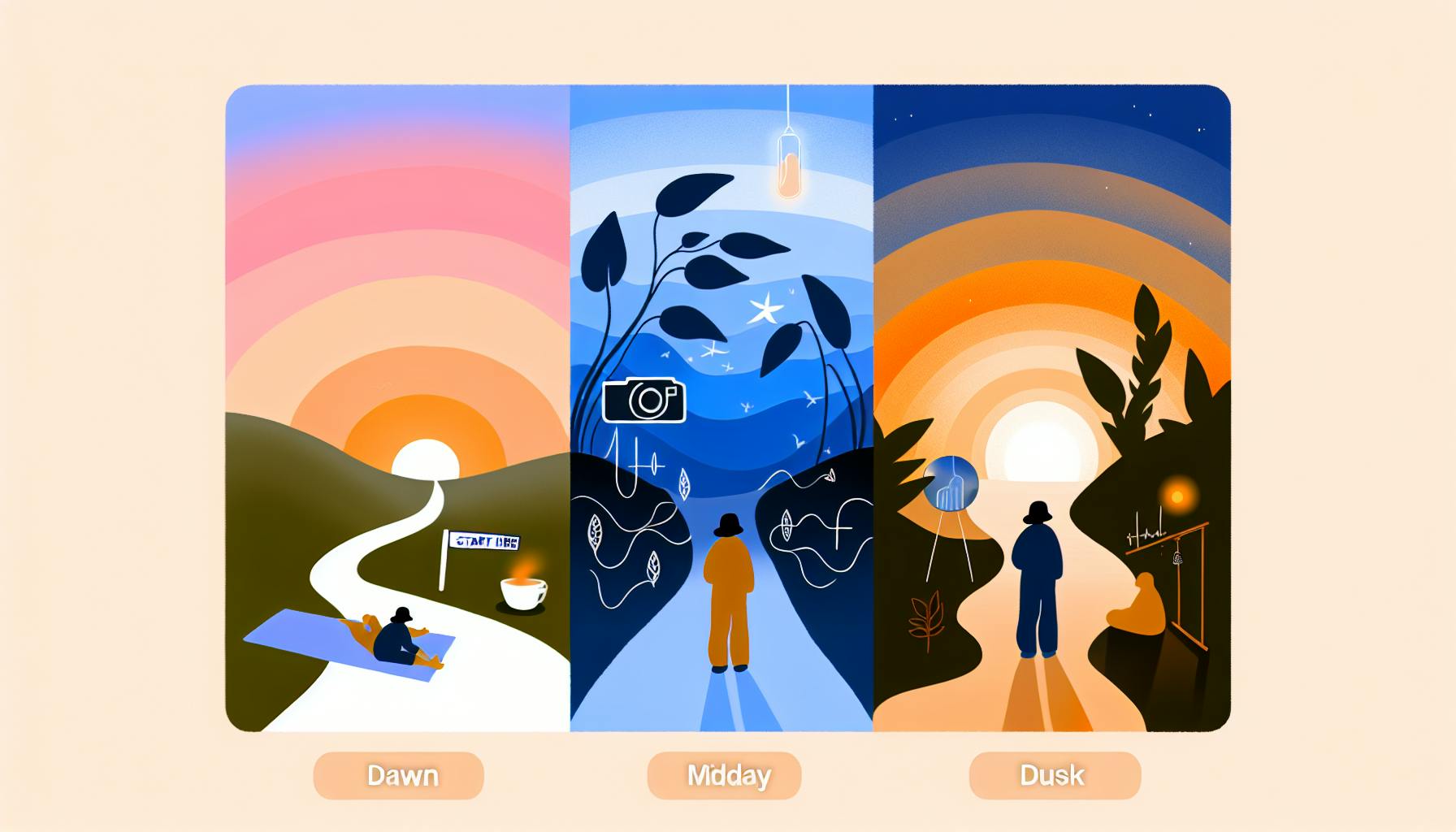TikTok is facing bans and restrictions worldwide due to concerns over data privacy, national security, and content moderation. With 170 million U.S. users affected, here's a quick breakdown of the key issues:
- Why It's Banned: TikTok collects extensive user data (location, biometrics) and is owned by ByteDance, a Chinese company. Governments fear this data could be accessed by the Chinese government.
- Where It's Banned: Full bans in India and Afghanistan; partial bans (like on government devices) in the EU, Canada, and the U.S.
- Impact on Creators: Loss of income from TikTok-specific revenue streams (e.g., Creator Fund, brand deals) and audience disconnection.
- Alternatives: Platforms like Instagram Reels, YouTube Shorts, and privacy-focused TapeReal are gaining traction.
Creators are diversifying across platforms to adapt, while TikTok is implementing measures like Project Texas to address security concerns. However, skepticism remains about its effectiveness.
| Key Issues | Details |
|---|---|
| Data Privacy | TikTok gathers vast user data; fears of sharing with the Chinese government |
| National Security | Classified as a potential threat by some governments |
| Creator Economy | Creators face income loss and audience disruption |
Stay informed about TikTok's evolving landscape and explore alternative strategies to navigate these changes effectively.
Why TikTok is Getting Banned: Data Privacy, Security Risks & Global Controversy Explained
Why TikTok Gets Banned
TikTok's rise in popularity has also brought it under the microscope of governments worldwide, leading to restrictions and, in some cases, outright bans. Several key issues have fueled this scrutiny.
Security Concerns and Data Collection
TikTok's ownership by ByteDance, a Chinese company, has sparked fears about data security and privacy. Under Chinese national security laws, ByteDance could be required to share user data with the Chinese government. TikTok's extensive data collection practices - such as tracking location, biometric information, and user behavior - have only heightened these concerns. While TikTok launched Project Texas to store U.S. user data on Oracle servers, doubts remain about whether this measure is enough to address the risks.
"If you have TikTok on your phone currently, it can track your whereabouts, it can read your text messages, it can track your keystrokes. It has access to your phone records", warns Sen. Josh Hawley, R-Mo. [4]
Content Moderation and Censorship
The platform has faced backlash for its approach to content moderation, with accusations of bias and censorship, especially on politically sensitive topics. These practices raise questions about whether TikTok aligns with the Chinese government's interests, influencing how information is shared globally [5].
Political and Geopolitical Factors
Rising tensions between China and other nations have placed additional pressure on Chinese-owned tech companies like TikTok. Many countries are focusing on protecting their citizens' data and digital infrastructure, which has led to stricter regulations and increased scrutiny [1][3].
These challenges create a complex environment for TikTok creators, who must adapt to shifting regulations while striving to keep their audiences engaged and maintain their income streams.
Effects on Content Makers
TikTok bans have a ripple effect on content creators, impacting their connection with audiences, income streams, and strategies for staying relevant.
Audience Disconnection
When TikTok is banned, creators often lose instant access to their followers. This sudden cut-off disrupts the bond they’ve built with their audience, making it harder to maintain engagement. Beyond individual creators, this shift also shakes up the broader creator economy that thrives within TikTok's ecosystem.
Income Impact
For professional creators, the financial hit can be tough. Multiple revenue streams tied to TikTok are directly affected:
| Revenue Stream | Impact of Ban |
|---|---|
| Creator Fund | Earnings tied to TikTok are lost |
| Brand Partnerships | Fewer sponsorships due to reduced exposure |
| Live Streaming | Loss of income from streams and virtual gifts |
| Product Sales | Lower visibility for merchandise |
These challenges are worsened by the need to quickly adjust to a changing social media environment.
Social Media Changes
With TikTok bans, creators and their audiences are shifting to other platforms like Instagram Reels and YouTube Shorts. Many creators are using analytics to track where their followers are moving and are building direct connections through email lists or personal websites.
Emerging creators face the hardest hurdles since TikTok's algorithm often plays a key role in helping them get discovered. On alternative platforms, discovery tools may not be as effective, making it tougher to gain traction. To stay afloat, creators are testing new platforms and strategies to keep their careers on track.
sbb-itb-bc761f5
Options for Creators
With TikTok facing bans in certain regions, creators have several ways to keep their content and income flowing. Here's a look at how they can navigate this shifting social media landscape.
Other Video Platforms
Several major platforms are stepping in to offer alternatives to TikTok. Instagram Reels and YouTube Shorts are two of the biggest contenders, giving creators new spaces to grow their audiences and earn money:
| Platform | Key Features | Best For |
|---|---|---|
| Instagram Reels | Visual-focused content, shopping tools | Fashion, lifestyle, product reviews |
| YouTube Shorts | Longer videos, searchable content | Educational content, tutorials |
| TapeReal | Privacy-focused, direct monetization | Premium content creation |
Still, putting all your eggs in one basket isn't ideal. Creators should spread their efforts across multiple platforms to stay flexible.
Multi-Platform Strategy
Big names like Charli D'Amelio show the importance of being active on more than one platform. By tailoring content to each platform's strengths, keeping an eye on audience habits, and posting consistently, creators can build a more stable presence.
Exploring TapeReal

Privacy concerns tied to TikTok bans have made platforms like TapeReal more appealing. TapeReal emphasizes privacy and gives creators more control over their content, along with direct ways to earn money. This makes it an attractive option during uncertain times in the social media world.
With TikTok's U.S. audience topping 170 million [3], creators need options that combine reach and monetization. As they explore these alternatives, TikTok's future remains unclear.
What's Next for TikTok
Addressing Ban Concerns
TikTok is making structural adjustments, like Project Texas, to tackle security concerns and maintain user confidence. For instance, U.S. user data is now stored on Oracle servers. However, publicly shared videos can still be accessed on foreign servers, which underscores ongoing issues [2].
With 170 million U.S. users on the line [3], TikTok needs to show measurable progress in key areas:
| Focus Area | Current Setup | Needed Improvements |
|---|---|---|
| Data Storage | U.S. data stored on Oracle servers | Ensure all U.S. user data, including backups, stays exclusively on U.S. servers |
| Transparency & Security | Basic encryption and reporting | Implement regular public audits and strengthen end-to-end encryption |
While these efforts aim to address concerns, they also spotlight the global demand for clearer and stronger regulations.
Shifting Social Media Rules
The TikTok debate is driving changes in social media regulations worldwide. Inspired by the EU's GDPR, new rules may enforce stricter data localization, regular security checks, and clearer ownership disclosures [1][3].
As platforms adjust to these stricter requirements, creators are finding new ways to connect with audiences while keeping data secure.
Evolving Creator Strategies
These changes bring both hurdles and opportunities for content creators, urging them to rethink their strategies and focus on platforms that align with updated privacy and monetization norms.
| Platform Category | Advantages | Audience Focus |
|---|---|---|
| Privacy-Centered Platforms | Better data protection and user control | Tech-savvy and privacy-conscious users |
| Region-Specific Platforms | Compliance with local regulations and cultural fit | Audiences in specific markets (e.g., Moj in India) |
This evolving environment is transforming how creators distribute content and engage with their audience, pushing for strategies that prioritize privacy and regional relevance.
Key Points
The TikTok ban raises concerns for users, creators, and the digital world at large. With 170 million U.S. users potentially impacted [3], it's important to grasp the main issues shaping this situation.
TikTok's handling of user data has sparked privacy debates. The platform's data collection practices, potential compliance with Chinese government requests, and global legal demands for user information are at the heart of these concerns. In early 2024, TikTok received 13,166 formal legal requests for user data worldwide [3], underlining the scale of the issue.
Here are three main areas of impact:
- Data Privacy: TikTok gathers a vast range of user data, including biometric details and browsing habits [3].
- National Security: Classified as a Foreign Adversary Controlled Application, the platform has raised questions about who controls and accesses this data [3].
- Creator Economy: For content creators, platform uncertainty affects both access and monetization, pushing many to diversify their presence across multiple platforms.
TikTok's Project Texas aims to bolster data security, but doubts remain about whether it can fully address the core privacy and security challenges [2].
For both users and creators, staying aware of these issues is key to making smart choices about using the platform and shaping content strategies. As TikTok works to resolve these challenges, keeping up with developments will help everyone navigate the changes effectively.
FAQs
Why is TikTok getting banned?
TikTok has faced bans in several regions due to concerns over national security. Lawmakers argue that its ties to ByteDance and its data practices, including the collection of location and biometric data, present privacy and security risks [3]. These concerns have prompted governments and security experts to question how user data is handled, leading to varying restrictions worldwide.
In what countries is TikTok banned?
TikTok bans generally fall into two categories:
| Ban Type | Countries/Regions |
|---|---|
| Full Ban | Afghanistan, India, Iran, Kyrgyzstan, Nepal, Somalia |
| Government Device Ban | Australia, Belgium, Canada |
In the U.S., TikTok’s 170 million users [3] are at the center of ongoing debates over data privacy. Efforts like Project Texas, which stores U.S. user data on Oracle servers, aim to address these concerns, but skepticism remains [2].
For creators, these bans often mean finding new platforms and strategies to maintain their audience and income. The restrictions highlight the increasing global scrutiny of TikTok and its impact on both users and content creators.



